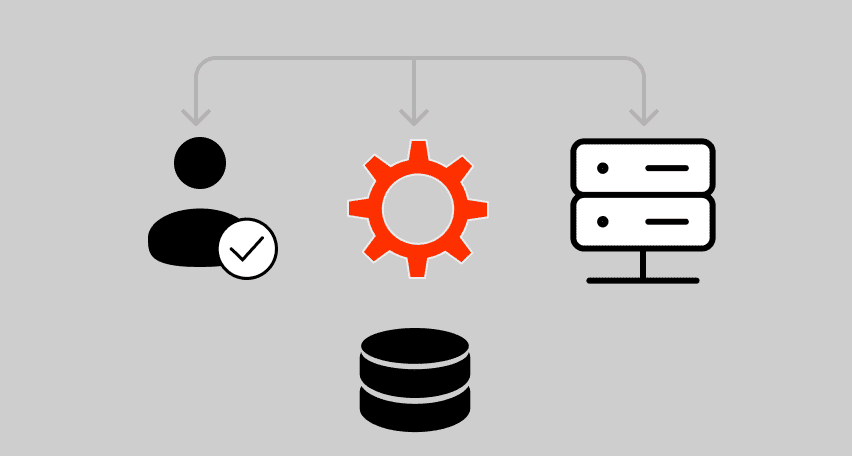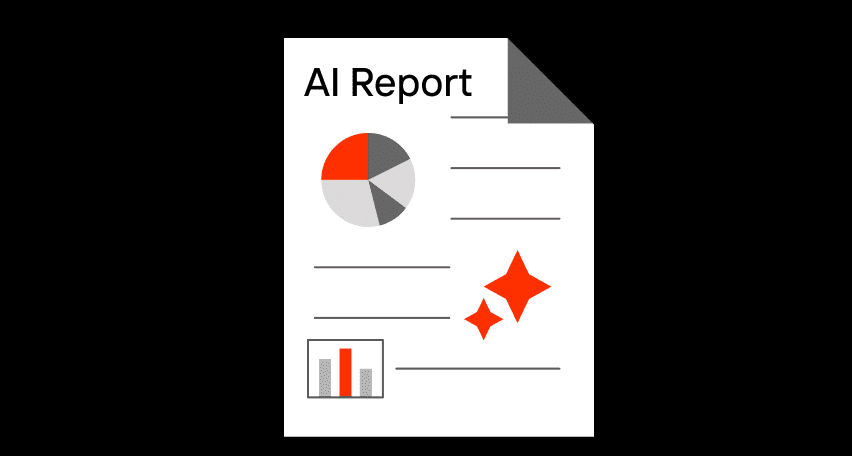Essential Differences between Web App and Mobile App Testing
Software testing is a crucial stage of the software lifecycle and critical to any product’s success. On its own, testing is a long process filled with various complexities. However, as you develop different types of software applications, the complexity only increases.
Software applications are designed differently from each other. Based on their purpose, their expected environment, and the technology used; testing requirements vary from application to application. Because of this, it’s hard to understand testing procedures for different software applications, unless you are an experienced software tester yourself.
Mobile and web applications are some of the most common types of software applications used across businesses worldwide. In this article, we will discuss the differences between mobile and web apps and explain the testing approach for both of them.
Differences between a Mobile App and a Web App
To understand how mobile app and web app testing differ from each other, it’s important to know why web and mobile apps are distinct from each other. Knowing the subtle differences between these applications can help create an efficient testing strategy for both of them.
Web Applications
Web applications are a class of software that mostly runs on web browsers. These applications are usually built using CSS, HTML5, and JavaScript. However, there are also various other technologies such as React for web development, Angular, Node JS, etc. These technologies help web applications perform more efficiently and offer greater features & functionalities.
Compared to websites, web applications are more interactive. They give users highly robust features that a generic website cannot provide. Many businesses turn to a web application development company to create tailored solutions for their needs, ensuring optimal functionality and scalability. Because you can access these applications through the web browser of your desktop or laptop, there’s no need to have special hardware configurations for these applications. Classic examples of web apps are web banking portals and webmail.
Mobile Applications
A mobile application is a software built specifically for mobile devices such as smartphones, tablets, and other mobile devices. However, mobile apps are a little different than desktop web apps, as they fall into three main categories: mobile web, native and hybrid apps.
Mobile Web Applications
A mobile web application is a software that you can access through your mobile browser. Therefore, You don’t have to download those applications in your mobile device to use them. Similar to web apps, mobile web applications are usually built using JavaScript, CSS, and HTML5.
That said, there is no standard software kit used for them. Among other mobile applications, mobile web apps are the easiest to build and test. However, at the same time, they only offer primitive functionality.
Native Applications
Native applications are fast and more advanced in terms of features. Unlike other applications we’ve discussed, they have to be download on the device before using them. Because these applications are platform-specific, they are built only using integrated development environments (IDEs) and specific programming languages.
Hybrid Applications
Hybrid mobile apps are unique in the sense that they combine characteristics of both mobile web and native mobile apps. These applications are built using a “standard web” stack (JavaScript, HTML5, and CSS).
After that, they are wrapped and design for a native environment, helping developers use the same code on different platforms. Although these applications render on your mobile browser, they need to be downloaded from the app store separately.
At the same time, these applications have special permissions on your phone, such as GPS, contact list, access to your camera, etc. While these applications are easier to build and maintain, they are slower in terms of performance and offer less advanced functionalities to users compared to native counterparts.
Types of Mobile App and Web App Testing
Although mobile and web app testing are different in so many ways, there are many similar processes within these testing procedures. Here are some of the most commonly used types of mobile and web app testing.
Functional Testing
As the name suggests, functional testing is centered on the functionality of a mobile and web application. Therefore, during functional testing, testers need to evaluate whether the core functions of an application are performing optimally.
Usability Testing
Most people know usability testing by the term user experience testing. This type of mobile testing evaluates the mobile and web application in terms of user-friendliness and ease-of-use.
Compatibility Testing
Compatibility testing is the type of mobile and web app testing that focuses on the non-functional aspects of the application. As the name suggests, the procedure measures the compatibility of mobile and web apps against specific software, network, and hardware requirements.
Performance and Load Testing
Performance testing is meant to evaluate how mobile and web apps function under a particular workload of users. It helps testers ensure that the application doesn’t malfunction during its operation. When you’re planning to publish your mobile app on the App Store or Google Play and expect significant downloads, specialized performance testing services for mobile apps become crucial to verify that your system can handle the anticipated load and operate smoothly and efficiently.
Security Testing
The level of security in a mobile and web app is fundamental to its success. Security testing helps developing teams evaluate the authenticity, integrity, and confidentiality of the mobile and web app.
Installation Testing
Installation testing refers to the testing procedure for evaluating the installation and removal process of the mobile and web app.
Localization Testing
Localization testing refers to the process of evaluating whether the UI or graphical of a mobile and web app suits the language, culture, or device accessibility of a particular region.
Automated Testing
Automated testing refers to the testing procedure where testers automate the testing process of mobile and web apps with the help of scripts.
Manual Testing
Manual testing the type of mobile and web app testing that utilizes human experience to evaluate the functionalities of software systems thoroughly.
Differences in Mobile App Testing vs. Web App Testing
At the same time, however, there are many differences in testing between the mobile app and web app testing. This happens because they have differences in terms of how they cope with an Internet connection, user interaction, and compatibility issues.
User Interaction
In terms of user interaction, users of most desktop browser-based applications can only use a keyboard or a mouse to interact with the software. They must perform all the operations by hitting a particular key or clicking the mouse.
On the other hand, mobile apps offer a greater scope of options for interaction. You can not only tap, swipe, pull, and pinch objects on the screen, but also can use voice commands, motion sensors, and fingerprint sensors to interact with the software. This is why testing user interaction on mobile devices is far more difficult compared to web app testing.
Internet Connection
As the name suggests, web applications rely a lot on the internet to function on your device. This means they cannot function offline, which is the same for mobile web applications. For this reason, it’s essential for software testers to test whether an application performs well under varying speeds of Internet connections.
Moreover, not all mobile apps are meant to work 100% offline. Therefore, software testers must see whether or not native and hybrid mobile apps work well in offline mode. It’s also important to test how the application reacts to interrupted connections and how it behaves with Wi-Fi or varying bandwidth connections (3G, 4G, 5G, etc).
Compatibility
Web applications operate on several browsers. Therefore, they must be tested in several different browsers, something that also applies to their hybrid and mobile web application counterparts.
That said, in terms of device compatibility, web-based applications are the easiest to test. The functionality of desktop-based apps remains pretty much the same across different devices. However, a testing procedure in mobile apps is much more complicated since they are available in a wide variety of devices.
This rich range of devices gives greater functionality to mobile applications, but this also makes testing much more complex. Therefore, mobile app compatibility testers need to consider technical characteristics of every mobile device and see how different models affect the app’s behavior.
RAM Limitations
Software testers need to remember that primary memory (RAM) is different for mobile and web apps. Although some mobile devices do have 2-8 GB of RAM, the performance of some of the best smartphones pales in comparison with that of an average desktop. Because of this, if you don’t optimize your app for mobile use, it will perform significantly slower than desktop.
Additionally, mobile applications get updated more frequently than their web apps. This is why testers need to be vigilant in testing how these updates affect memory usage and storage. Designing tests for upcoming updates prepares your team for any expected performance issues.
Storage Capacity
Likewise, the storage capacity of mobile devices is significantly less than desktops or laptops. On average, smartphones have a default storage memory of 16 GB. Limited storage severely impacts the testing of mobile applications, especially when compared to the enormous amount of memory and storage web browsers enjoy.
At the same time, most mobile apps rely on advertising services to generate revenue. These services and advertising platforms can slow down browser performance, so if you are using a web-based mobile app, the performance worsens significantly.
Battery Life
Desktop machines don’t run on batteries. However, an app that consumes power excessively becomes a nightmare for many smartphone users. Batteries in mobile devices are often valued more laptops and other computing devices.
So when users see that a mobile app drains too much of their power, they don’t waste time deleting it. This is why QA teams need to check how the mobile app performs on a low-charged compared to a fully-charged device.
Screen Size
Desktop and laptop PCs are available in limited screen dimensions. Compared to that, mobile devices have a greater variety of screen sizes in this respect. This is why the QA team needs to examine certain mobile screen dimensions and ensure that the app is easy to use and all key fields are visible.
Installation/Un-Installation
Web applications use your web browser as a means to run on your device, so you don’t have to install them on the device. This is why they work perfectly on your devices as long as your machine has minimum hardware specifications.
In contrast, you need to install mobile applications on the device to use them. For this reason, testing whether an application installs and uninstalls on a particular device type is essential for mobile app QA testers.
Doing so ensures that the application is fit for all supportive devices and the application does not crash during installation or un-installation. You should also ensure that the app folder gets deleted from the file manager once the app is deleted from the mobile OS. At least, you should prompt the user whether he or she wants to keep the data or not.
Conclusion
Nowadays, mobile and web apps dominate the software market. However, without extensive testing, these applications cannot perform optimally. Testing mobile applications is a lot more complex, as they have to manage different specifications, optimize notification management, and test synchronization on multi-platforms.
PFLB is a testing service dedicated to ensuring the best software quality for our clients. We have served over 500 companies across a wide variety of domains that range from finance and healthcare to retail and technology.
Our adherence to the Software Quality Assurance standard has helped us to deliver not only the best performing solution but also products that fulfill all industry quality requirements.
By trusting on their expertise, your business can benefit from the high-quality mobile app and web app testing, and ensure that your products meet industry demands and shine in terms of quality and performance.
If you want to learn more about our company, feel free to visit our website.
Related insights in blog articles
API Endpoint: A Complete Guide

Modern applications rely heavily on APIs (Application Programming Interfaces) to communicate and exchange data across different systems. At the heart of this interaction lies the API endpoint — a fundamental concept that defines where and how data exchanges happen. This guide explains clearly what an API endpoint is, outlines its importance, and provides practical insights […]
gRPC vs. REST: Detailed Comparison

Choosing between gRPC and REST can feel confusing, especially if you’re trying to figure out the best way for your applications to communicate. This article breaks down the grpc vs rest comparison clearly, without jargon or confusion. You’ll learn exactly what each protocol is, the advantages and disadvantages of each, and understand why gRPC is […]
Top 10 Data Masking K2view Alternatives

If you’re exploring alternatives to K2view for data masking, this guide breaks down the top tools worth considering. We’ve compiled the leading solutions that serve a variety of industries — from finance and healthcare to DevOps-heavy SaaS. You’ll find a detailed comparison table of K2View competitors, full tool breakdowns, and a closer look at PFLB […]
How to Generate AI-Powered Load Test Reports with PFLB

Say goodbye to tedious manual reporting after load testing! With PFLB’s innovative AI-powered report generation, performance engineers can quickly turn detailed test data into comprehensive reports. This guide walks you step-by-step through setting up your test, running it, and effortlessly generating exhaustive performance analysis — so you spend less time reporting and more time optimizing. […]
Be the first one to know
We’ll send you a monthly e-mail with all the useful insights that we will have found and analyzed
People love to read
Explore the most popular articles we’ve written so far
- Top 10 Online Load Testing Tools for 2025 May 19, 2025
- Cloud-based Testing: Key Benefits, Features & Types Dec 5, 2024
- Benefits of Performance Testing for Businesses Sep 4, 2024
- Android vs iOS App Performance Testing: What’s the Difference? Dec 9, 2022
- How to Save Money on Performance Testing? Dec 5, 2022